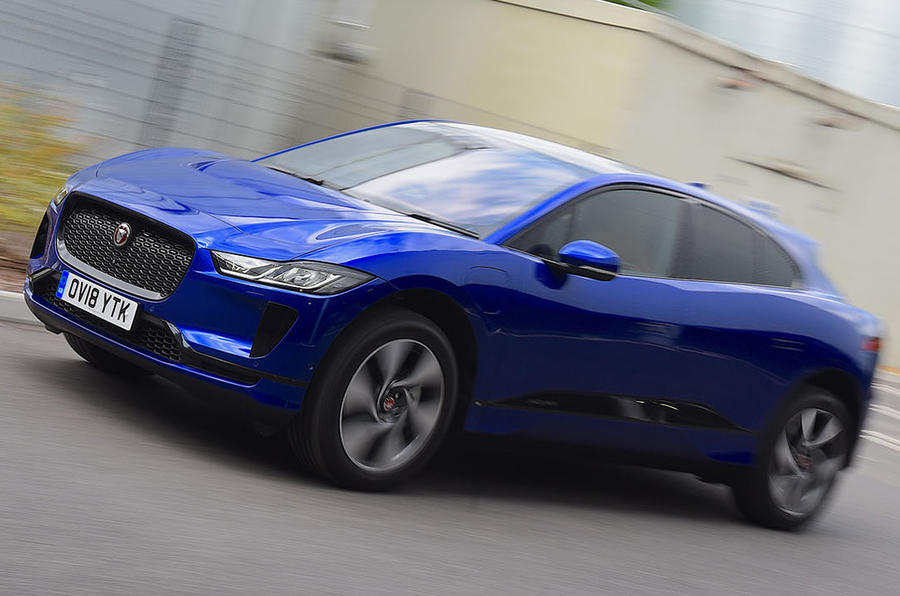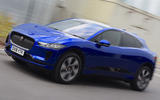What is it?
The first premium all-electric large car from an established European brand, on UK roads for the very first time.
The Jaguar I-Pace may look like a rather funky but quite conventional SUV — and that strategy is quite deliberate, as you can tell from the entirely needless front grille — but underneath that rather pleasing shape lies a revolution, and so it would be were this an Audi, BMW, Mercedes-Benz or Porsche. But it’s a little old Jaguar, and while BMW has the more narrowly defined BMW i3 further down the scale, at this price point Jaguar has beaten the lot to market.
As previously reported, the Jaguar I-Pace comes in a single mechanical specification, with a combined 394bhp from its front and rear electric motors, fed by a lithium ion battery pack laid out low down and entirely within a wheelbase that's some 116mm longer than that of an Jaguar F-Pace, despite it being a physically shorter car.
All electric cars are heavy, although the I-Pace’s 2133kg kerb weight is similar to that of its closest conceptual rival, the Tesla Model S; but they are also laden with torque, meaning that so long as they have the traction, they are quick off the line. And the I-Pace is: 0-62mph in 4.8sec, if you please.
































Join the debate
Add your comment
Jaguar I Pace SE 2019
I have two month with I Pace and I'm very dissapointed , with full battery charge you only have 336 kilometers of autonomy , but only if you don't use the air conditioned, without lights on, without use media, only if you go no more than 65 km/h
Two times I need to return to my house in Taxi, because I had not enough battery to return
I-Pace
Hoping against hope this Jaguar would be value for money despite being a new entry. Nope. That £81K smacks of greed. I got to £74K beofre realising it just wasn't value for money. I suspect sales aren't all that - an enquiry wiith a dealer said early delivery 2019 was easy.
JLR has lost its way IMO. Behind the ball, too expensive and a miserable dealer network. Pre-Brexit I wanted something non-German, but have now placed an order for an Audi E-Tron. My loyalty to UK (?) car companies other than AM is sadly muted.
Nice car, poor value. They could have cleaned up!
Now we know the etron is not
Now we know the etron is not only heavier and slower than the ipace but actually starts at £71500 your thoughts about ipace value for money might need a second look?
The Audi is also a very safe and dull design, a boring missed opportunity.
JLR have got there before the Germans but
the i-Pace may have missed a trick. The body is constructed of steel and aluminium which is great for strength and familiarity for the buyer but bad for weight. As in any electric car the batteries and motors weigh quite a lot the aim should be to reduce weight elsewhere for example using carbon fibre like the BMW i3/i8. The reason BMW is slower getting larger BEVs to market is probably due to 2 reasons - development of a larger safe carbon fibre body and of course trying to sell all those Diesel engines. But when the new German BEVs arrive I cannot help but speculate that they will be lighter due to carbon fibre and thus have a greater range. But JLR will have established themselves in the market already. As for the article at least the writer does remind you that a BEV carries significant compromises which if you cannot accommodate in your use of the car then you should avoid a BEV. As for concerns about ancillary systems affecting battery range these concerns are very real. My neighbour’s i3 can have it’s “summer” range halved in winter due to using heated seats and the heating from the climate control.
spqr wrote:
It will be very little to do with your neighbours heated seats which typically would be about 300 watts (and on a timer).. but as you partly correctly surmise the actually electric heating has a drastic effect which will be more like 3000 watts plus and on all the time the vehicle is in use.
On my plug-in hybrid, cold months shave at least a 3rd off battery range due to heating and no doubt that scales up similarly on all electric vehicles.
Summer is a joy as air con takes a comparatively small amount of power and the range rises again drastically. Sadly we live in a cold damp country more days than a warm dry one.
The other ancillary equipment in the vehicle, especially phone charging really is inconsequential.